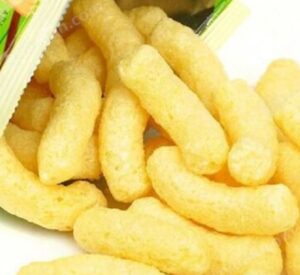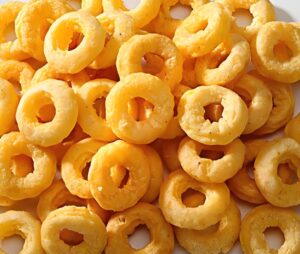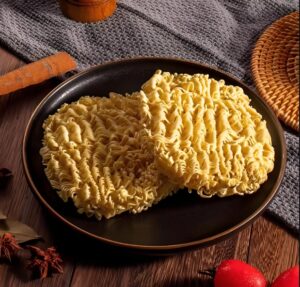<h1>How Puffing Machines Create Various Shapes of Puffed Foods</h1>Puffing machines are essential tools in the food processing industry, transforming raw ingredients into light, crispy puffed foods like snacks and cereals. These machines use advanced extrusion technology to expand and shape products, meeting the growing demand for innovative, appealing food items. In this article, we’ll explore how puffing machines work, the science behind shaping puffed foods, and why they’re valuable for B2B operations in foreign trade.
puffed snack food making machine
ToggleWhat is a Puffing Machine?
A puffing machine, often called an extruder, is a specialized device used to produce puffed foods by applying heat, pressure, and mechanical force. It processes raw materials like grains, starches, or flours into expanded products with unique textures and shapes. This equipment is widely used in the manufacturing of snacks, breakfast cereals, and pet foods, making it a staple in global food export businesses.
In B2B contexts, puffing machines are customizable, allowing manufacturers to adapt them for different production scales. They integrate with other machinery in assembly lines, enhancing efficiency in large-scale operations. Key components include a feeding system, barrel, screw, and die, each playing a role in the puffing process.
The Working Principle of Puffing Machines
Puffing machines operate on the principle of extrusion, where raw ingredients are forced through a confined space under high pressure and temperature. This process gelatinizes starches, denatures proteins, and creates steam that expands the material upon release. The result is a puffed product with a porous structure and extended volume, ideal for snacks.
Heat is generated through friction and external sources, while the screw mechanism mixes and conveys the mixture forward. As the material reaches the die, sudden pressure drop causes rapid expansion, forming the puffed shape. This controlled environment ensures consistent quality, which is crucial for exporters targeting international markets.
Key Stages in the Extrusion Process
The extrusion process begins with feeding raw materials into the machine. Ingredients like cornmeal or rice flour are preconditioned with moisture and heat to prepare them for expansion. This stage sets the foundation for the final product’s texture and shape.
Next, the material enters the cooking zone, where it’s subjected to high temperatures—typically 100-200°C—and pressure. This cooks the mixture uniformly, activating starches and creating a dough-like consistency. Proper control here prevents defects and ensures the puffed food retains its desired attributes.
Finally, the material is extruded through a die, where it expands and is cut into specific shapes. Cooling and drying follow to stabilize the product, making it ready for packaging. This multi-stage process is highly efficient, allowing B2B manufacturers to produce large quantities quickly.
How Shapes are Formed in Puffed Foods
The shape of puffed foods is primarily determined by the die design in the puffing machine. Dies are interchangeable molds with various openings, such as circles, stars, or rings, that dictate the final form. By swapping dies, operators can create everything from simple rings to complex twists, catering to market trends.
During extrusion, the material is forced through these dies at high speed, and as it exits, the sudden release of pressure causes it to puff up and solidify into the desired shape. Factors like die size, material flow rate, and cutting mechanisms influence the precision of shapes. This flexibility allows businesses to innovate and meet consumer preferences for visually appealing products.
Role of Die Design and Customization
Die design is a critical aspect of puffing machines, enabling the production of diverse shapes like curls, balls, or flakes. Manufacturers can collaborate with suppliers to custom-design dies based on specific product requirements, such as thickness or pattern. This customization is a key selling point in B2B trade, where clients seek unique branding opportunities.
Advanced puffing machines incorporate computer-aided design (CAD) for dies, ensuring accuracy and repeatability. Variables like temperature and screw speed can be adjusted to fine-tune shapes, reducing waste and improving yield. For foreign trade, this means exporters can offer tailored solutions to international buyers.
Innovations in Shaping Technology
Modern puffing machines feature innovations like co-extrusion, where multiple materials are layered to create filled or multi-colored shapes. This technology allows for products like cheese-filled puffs or fruit-flavored rings, adding value to the end product. Such advancements help B2B companies differentiate in competitive markets.
Automation and AI integration are also transforming shaping processes. Sensors monitor extrusion in real-time, adjusting parameters to maintain shape consistency. This reduces human error and enhances productivity, making puffing machines more appealing for global exporters.
Types of Puffed Foods Produced
Puffing machines can produce a wide range of puffed foods, including corn puffs, rice cakes, and wheat-based snacks. Each type starts from basic ingredients but varies in processing to achieve distinct shapes and flavors. For instance, corn puffs often use ring-shaped dies for their iconic form.
In the B2B sector, these machines are used for industrial-scale production of ready-to-eat snacks, baby foods, and pet treats. Exporters benefit from the versatility, as puffed foods have a long shelf life and are easy to package for international shipping.
Popular Puffed Food Examples
Common examples include cheese balls, which are spherical and made using ball-shaped dies, and twisted sticks created with helical molds. Breakfast cereals like puffed rice are another staple, offering simple yet nutritious options. These products appeal to health-conscious consumers, driving demand in global markets.
Specialty items, such as vegetable-based puffs, are gaining popularity for their nutritional value. Puffing machines enable the incorporation of additives like vitamins or flavors, allowing manufacturers to innovate and expand their product lines.
Benefits of Puffing Machines for B2B Operations
For businesses in foreign trade, puffing machines offer significant advantages, including high production efficiency and cost savings. They can process large volumes quickly, reducing labor costs and enabling competitive pricing in export markets. This efficiency is key for scaling operations globally.
Additionally, these machines promote product innovation, helping companies create unique shapes and textures that stand out. In B2B settings, this leads to stronger partnerships with retailers and distributors, as clients value the ability to customize products for different regions.
Economic and Sustainability Aspects
From an economic perspective, puffing machines minimize waste by optimizing material use, which lowers production costs. They also support sustainability by allowing the use of alternative ingredients, such as gluten-free or organic materials, appealing to eco-conscious buyers in international trade.
In terms of energy efficiency, newer models consume less power while maintaining output, reducing operational expenses. This makes them attractive for exporters focused on green practices and compliance with global standards.
Frequently Asked Questions
Below, we address common queries about puffing machines and puffed food production to provide further value.
What is the main difference between a puffing machine and a regular extruder?
A puffing machine is a type of extruder specifically designed for creating expanded, low-density foods through rapid pressure release, whereas regular extruders focus on shaping without significant puffing.
How can businesses customize shapes for their puffed products?
By using interchangeable dies and adjusting machine settings like speed and temperature, businesses can easily customize shapes to match branding or market demands.
Are puffing machines suitable for small-scale operations?
Yes, many models are available in various sizes, making them adaptable for both small businesses and large industrial setups, with options for manual or automated controls.
What maintenance is required for puffing machines?
Regular cleaning of dies and screws, along with periodic checks of heating elements, ensures optimal performance and prevents contamination in food production.
How do puffing machines impact food nutrition?
They can preserve or enhance nutrition by quickly processing ingredients, though over-processing might affect certain vitamins, so precise control is essential.
Conclusion
In summary, puffing machines play a pivotal role in the food industry by enabling the creation of diverse, appealing puffed foods through innovative extrusion techniques. From understanding the basic principles to leveraging advanced shaping technologies, businesses can enhance their production capabilities and meet global demands. By investing in these machines, B2B exporters can drive efficiency, innovation, and profitability in the competitive foreign trade landscape.









